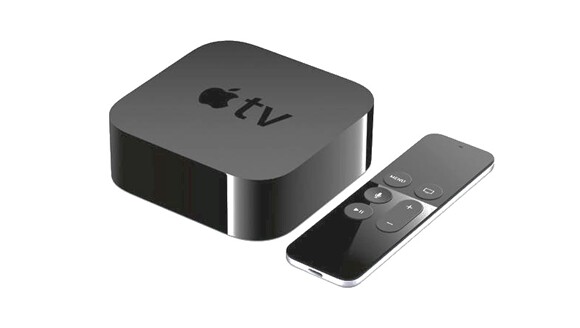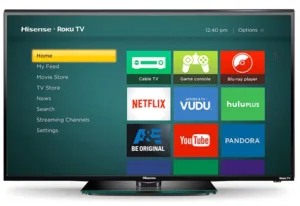When the iPad 1 came out in 2010, I purchased a unit for work so that during my travels, I could store my PowerPoint presentations in PDF files for immediate access when I wanted to show customers slides without having to take out my Window PC.

When I used my PC, I had to wait for three minutes for it to boot. It seemed an eternity before the slides were displayed for viewing, if I was lucky. I also purchased an Apple TV, the first generation, shortly afterwards so that I could show slides using the TV in my office for presentations. At that time, the first generation Apple TV had a resolution of 720p, but that was sufficient for all my purposes.
Later on, I purchase an iPad 2 and a second generation Apple TV for my home use, which started my transition from PC systems to Apple’s system at home. Now I have all Apple system at home with desktops, notebooks, iPads, and iPhones, and of course, the Apple TV.
I have fully enjoyed having the Apple TV for the last five years as I watch many videos and photos under the control of the iPad, the iPhone, or using the remote control. One very convenient feature is searching using the “real” keyboard of the iPad or the iPhone. Otherwise, I have to repeatedly click the up-down-left-right buttons of the remote control. I have “sold” this Apple TV idea to many friends who visited me; many have ended up purchasing the Apple TV afterwards.
 Apple TV Set-Top Box
Apple TV Set-Top Box
When I first heard about the Apple TV and found that it was simply a set top box. I was quite disappointed. I was hoping that Apple would actually make a TV with all the Apple TV functions integrated into it and more. In addition, I was hoping that the “real” Apple TV would also have a touch screen and behave like the iPad so that the I could control the TV using an iPad or an iPhone. At the same time, I could have stoo in front of the TV and navigate on the TV screen itself, pretending that it is simply a very large iPad. After all these years, it has not happened. On the other hand, I keep hoping that I might have a “real Apple TV” at home one day.
I visited my daughter in the Bay Area and was surprised that she and her husband had purchased a 55” Roku TV. They are both Apple users with desktops, notebooks, and cell phones all made by Apple. On the other hand, they had a Roku box for many years as the combination of the cable box and the Roku box came out to be much cheaper overall, where they lived around San Francisco. I played with it and had very positive experience with the functions and navigation. It prompted to think about having a real Apple TV even more.
 Roku STB
Roku STB
A Hisense TV, the Roku TV
At this time, Roku has partnered with several “top” brand TV makers including Insignia, TCL, Sharp, Hitachi, Element, Philips, RCA, and Hisense as listed on the Roku website. It is worthwhile to note that it does not include other “top” brands like Sony, Samsung, LG, etc.
What makes Roku TV different from Apple TV? Obviously, Roku TV is a available as a ‘real TV’ with a display and a tuner, and the sets range from an Insignia 24” TV priced at $119.99 to an Insignia 55” TV 4K Ultra HD priced at $429.99 and to a TCL 75” TV 4K Ultra HD with Dolby Vision HDR priced at $1999.99.
An Apple TV is a set-top box with 32GB ranges from a 1080p model priced at $149 to a 2160p with Dolby Vision and HDR10 priced at $179. To complete the Apple TV system, a TV is needed. On the Best Buy website, the lowest priced 55” Sony TV, LED – 2160p – Smart – 4K Ultra HD is priced at $699.99 making the complete 55” system at $878.99, which is over twice the price of the equivalent Roku system. Please note that the prices were found on websites on February 14, 2018 and are subject to changes without notice.
Besides lower prices, I found that the Roku system is a lot more user friendly for non-technical, non-engineering users. I remember visiting a friend several years ago who has an audio-visual system, which included a TV, a Yahama home theatre sound system, a DirecTV box, and a Blu-ray Player. Of course, there were 4 remote controls each controlling one of the 4 “boxes”. The system looked very nice and contemporary inside the cabinet, but with the exception that there are small numbered labels next to various buttons.
I asked my friend what the numbers were for. He told me that in order for others in the house, except him, to use the system, they have to follow a recipe based on the number sequence and push the buttons sequentially so that the system works as needed. For example, if the person wanted to watch a Blu-ray movie, he has to push the buttons sequentially according to the recipe created by my friend. The individual systems and the desired functions would be turned on and chosen such that the whole system would work accordingly.
It was a surprise, but I understood completely how difficult it was to remember how the individual components were connected together forming the system in my own home and how I have to think about the connection every time I have to turn on the system. A manually driven system like the Roku TV would eliminate all these troubles. This Roku TV is exactly what I was hoping to have without the “real” Apple TV. As an Apple fan, I still hope that I can purchase the real Apple TV soon. I am also hoping that the Apple TV could be integrated into TV’s made by first tier top brand names that we are familiar with.
In addition to implementing the software interface, it would be desirable to simplify the hardware user interface also by providing a sub-woofer output so that the user can have an external sub-woofer connected to the TV directly. Tweeters, mid-range and bass speakers can be integrated easily into the TV chassis itself. I do not value a 3 mm thick TV screen as much if I have to connect a whole bunch of other needed components to complete the system. Instead, a reasonably thick screen with all the needed components integrated will be a big plus. Although with very high speed WiFi connections, Blu-ray and cable can be made optional as most of the contents can be streamed directly. Before long, I believe that even the DVR functions will be done in the “cloud” obsoleting the traditional cable box. With all this said, I am keeping my hope high for having the “real” Apple TV in my home.
Please send inputs and comments to the author, [email protected].
Analyst Comment
Ken’s friend obviously hasn’t seen the Logitech Harmony remotes which do a great job of making complex arrangements of devices simple to organise. I’ve had one for a good number of years and it makes life much simpler!
I wrote a presentation about the reasons why Apple might get into the TV business and all the reasons why it might not some years ago. The same reasons for and against would apply today, but the key one is that TV business is really about the panels and Apple has no panel business or way to add enough value to change the margin structure to suit its own business model. Also, the TV business saw what Apple did to the music business with iTunes and resisted Apple’s attempts to take some control of content. (BR)

